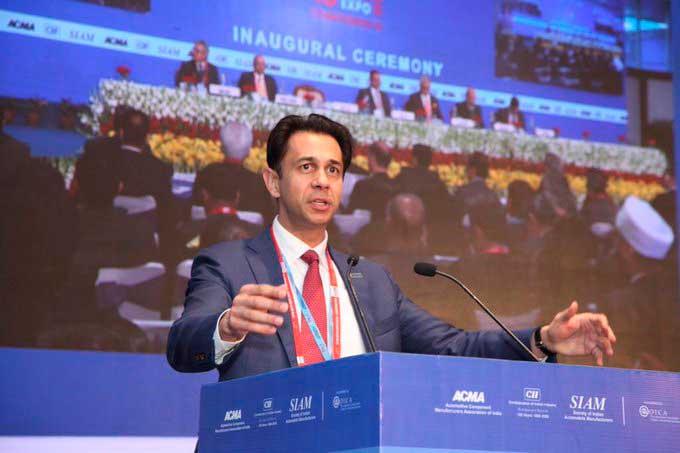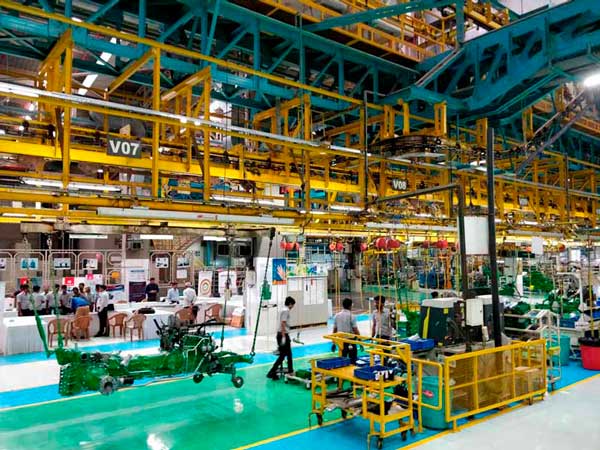In response to the ACMA SOS seeking priority intervention for operational sustainability of the components industry, the Government of India announced partial relief measures under Lockdown 2.0 guidelines.
Story by: Ashish Bhatia
The Auto Components Manufacturers Association (ACMA) had sought priority Government intervention for the operational sustainability of the components industry while it mobilised all possible resources and assets to help the Government and front-line workers fight the pandemic as per a March 27, 2020 release. According to Deepak Jain, President ACMA, the auto component manufacturers, especially from the tier-2 and tier-3 regions were facing severe hardships in form of cash flow, which if not immediately addressed could lead to the insolvency of such badly hit companies. Claimed Jain that the component sector’s estimated production loss is pegged at 1-1.2 crore per day. Among key demands put forward were relaxation of borrowing norms and statutory payments, an extension of the moratorium on payment of principal and interest of loans for a year to ease the norms of NPA, relaxation in fixed electricity charge and relaxation in levying demurrage charges for at least seven days for import cargo clearance to name a few.
MHA Order
Exercising powers under Section 10(2)(I) of the Disaster Management Act 2005, Chairperson, National Executive Committee, in an order dated April 14, 2020, extended the lockdown measures stipulated in the consolidated guidelines of Ministry of Home Affairs (MHA) to May 03, 2020. Lockdown 2.0, aimed at furthering the efforts to contain Covid-19 in the country albeit turned out to be different. With it, the Government of India (GoI) acknowledged the SOS calls from several distressed industrial sectors including the auto components industry. The measures are expected to partially relieve the industry of its pain points.
 In response to the ACMA SOS calls for a relaxation of the lockdown restrictions, the MHA revised guidelines committed to resuming necessary operations from April 20, 2020, in areas exempted from being categorised as containment zones by States, UTs or District Administration. Offering relief to daily-wage workers and labourers, the guidelines were especially aimed at leveraging the gains made in the first phase of the lockdown. While the guidelines did explicitly direct the closure of the Industrial and commercial activities in sectors like auto-industry, it directed the automotive supply chain serving hospitals to remain functional. It also directed the industrial and manufacturing sector to resume few services keeping in mind the safety measures. Reacting to the announcement, Deepak Jain, President ACMA in a press statement stated, “These guidelines are indeed very comprehensive and detailed. ACMA stands firmly by the government in this hour of crisis.” Jain, however, raised concerns over the revenues in the auto component industry citing a group of companies claimed to be staring at insolvency. “We urge the government to urgently infuse financial stimulus, based on our recommendations to ensure safe and sustainable industry operations post the lockdown,” he added.
In response to the ACMA SOS calls for a relaxation of the lockdown restrictions, the MHA revised guidelines committed to resuming necessary operations from April 20, 2020, in areas exempted from being categorised as containment zones by States, UTs or District Administration. Offering relief to daily-wage workers and labourers, the guidelines were especially aimed at leveraging the gains made in the first phase of the lockdown. While the guidelines did explicitly direct the closure of the Industrial and commercial activities in sectors like auto-industry, it directed the automotive supply chain serving hospitals to remain functional. It also directed the industrial and manufacturing sector to resume few services keeping in mind the safety measures. Reacting to the announcement, Deepak Jain, President ACMA in a press statement stated, “These guidelines are indeed very comprehensive and detailed. ACMA stands firmly by the government in this hour of crisis.” Jain, however, raised concerns over the revenues in the auto component industry citing a group of companies claimed to be staring at insolvency. “We urge the government to urgently infuse financial stimulus, based on our recommendations to ensure safe and sustainable industry operations post the lockdown,” he added.
Operating guidelines in containment zones
Activities allowed under the revised guidelines would not be permitted in containment zones or hotspots of Covid-19 outbreak. Only select permitted activities were allowed with effect on April 20, 2020. The ministry empowered States, Union Territories and District Administrations were asked to operationalise the limited exemptions subject to strict compliance of the already existing guidelines. Among those permitted to operate were custom hiring centres related to farm machinery, industries operating in rural areas outside the line of municipal corporations and municipalities, manufacturing and other industrial establishments in Special Economic Zones (SEZs) and Export-oriented Units (EoUs), industrial estates and industrial townships besides MSMEs in rural areas. Manufacturing units were directed to ensure frequent cleaning of common services and mandatory hand washing, avoid overlap of shifts and staggered lunch with social distancing apart from maintaining intensive communication and imparting training on good hygiene. All machinery and vehicle entering the premise be disinfected and employees be subjected to thermal scanning. The guidelines made medical insurance of works mandatory.
Proactive ACMA
Ahead of lockdown 2.0, ACMA had created a task force to evaluate the possibility of manufacturing facemasks and hand-sanitisers by its members. While few component companies expressed interest to manufacture these items, they also evaluated options to manufacture ventilators to address the shortage in the country. To understand the quality and the desired quantity of these products, ACMA sought information from the Government to additionally explore the import option using the CSR funding route. To help mitigate the impact of the pandemic, among the early efforts were addressing the needs of over one lakh contractual employees by releasing salaries due for March 2020. ACMA is known to have also issued an advisory assuring employees of job security besides offering healthcare and meeting basic necessities like food through select companies serving them through community kitchens. ACMA additionally sought help from Society of Indian Automobile Manufacturers (SIAM) and the Original Equipment Manufacturers for minimal disruption of the supply chain. The Auto Component Industry contributes 2.3 per cent to India’s GDP, 25 per cent to the manufacturing GDP and employs over 50 lakh people. In 2018-19, the turnover of the industry stood at USD 57 billion with USD 15 billion in exports. ACI
RBI Measures
Reserve Bank of India announced its second set of measures aimed at preserving financial stability in the system and its constituents, facilitating and incentivising bank credit flows, easing financial stress, and enabling normal functioning of the markets. Announcing nine measures overall aimed at reviving the struggling domestic economy, it slashed the reverse repo rate from four per cent to 3.75 per cent. It provided relief to NBFCs. The RBI Governor projected a growth rate of 7.4 per cent in 2021-22. With an objective to ensure finance flowing in the hands of all the stakeholders, the announcements were as below:
1. Targeted Long-Term Operations (TLTR) 2.0
A second set of targeted long-term repo operations for an initial aggregate amount of Rs.50,000 crore will be conducted to facilitate funds flow to small and mid-sized corporates.
2. Refinancing facilities for All India Financial Institutions
Special finance facilities for a total amount of Rs.50,000 crore to be provided to Small Industries Development Bank of India.
3. Reduction of reverse repo rate under liquidity adjustment facility
Reverse repo rate has been reduced by 25 basis points from four per cent to 3.75 per cent with immediate effect aimed at deploying surplus funds in investments and loans in productive sectors of the economy.
4. Raising limit of ways and means advances of states and UTs
5. Asset Classification
Moratorium period will be excluded while considering 9- day NPA norm for those accounts for which lending institutions decide to grant moratorium or deferment in effect forcing asset classification standstill from March 01-31, 2020.
6. Extension of resolution timeline
Recognising challenges to resolution of stressed assets or accounts which are or are likely to become NPAs, the period for implementation of resolution plan has been extended by 90 days.
7. Commercial and Cooperative banks shall not make any further dividend pay-outs from profits pertaining to FY2019-20.
8. Lowering of Liquidity Coverage Ratio requirement
To improve the liquidity position for individual institutions, Liquidity Coverage Ration requirement for scheduled commercial banks has been brought down from 1005 to 805 with immediate effect. This will be gradually restored in two phases – 90 per cent by October 01, 2020 and 100 per cent by April 01, 2021.













Leave a Reply